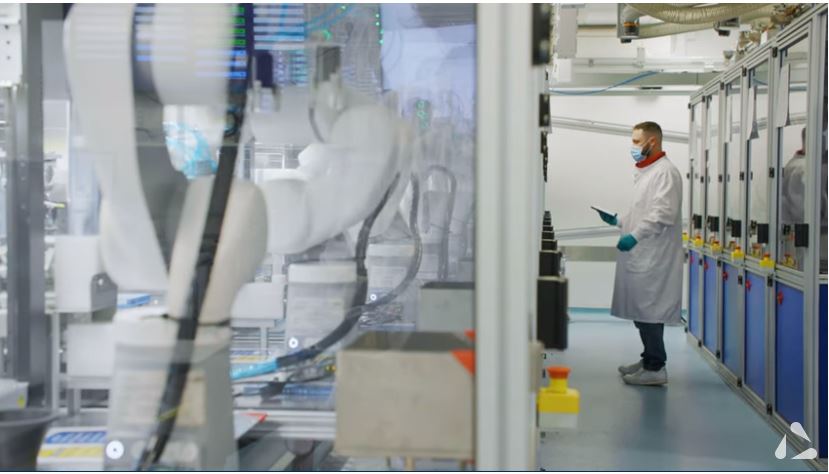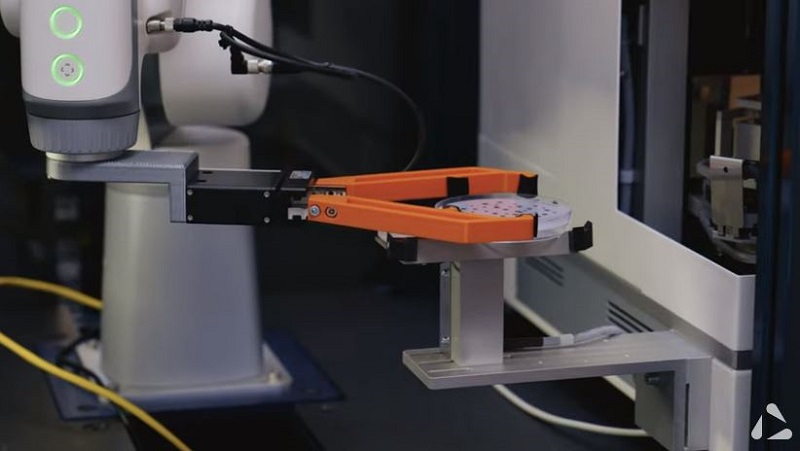Q. What are the biggest goals for the NHS to achieve in the next few years and how do you hope that automation will help to achieve these goals?
A. Peter Baker: One of the most-exciting challenges for the NHS and UHS is bringing cutting-edge technology to patients and staff, and in doing so attracting global talent into hospitals in order to continue to innovate at the frontline.
UHS has been at the forefront of significant progress over the past few years, including being instrumental in the development of COVID-19 vaccines, and investing in automation technology that supported COVID-19 diagnostic testing. To continue to do this innovative work, attracting talent from different sectors and new geographical areas will be key.
Investing further in automation will also be important to power these advances – and bring in experts who are keen to work with cutting-edge technology.
Moving into genomics is a big focus for us, for example, and one step change in this area will be the automation of screening processes.
To scale work in RNAi, gene expression analysis, or CRISPR fragment analysis, among other genomic applications, reliability and precision is critical – and automation offers this.
We can increase how efficiently research can be carried out, with greater flexibility and throughput in labs and ultimately bring costs down and shorten development cycles.
Q. What role do automation and robotics have to play in laboratories?
A. Craig Johnston: Automation can support laboratories to boost efficiencies by increasing both throughput and the accuracy of experiments and research.
The RT-LAMP testing facility in UHS is a great example of this, as the automated system allowed for thousands of COVID-19 tests to be read daily, with a high level of accuracy.
With the life sciences and biotech industries continuing to advance, automation will also be key to powering innovation.
Emerging areas like synthetic biology and gene editing require close control and precision, and automating processes will be critical to scale while maintaining accuracy and reliability.
Automation and robotics can also help to relieve scientists of repetitive and time-consuming admin tasks by automating entire processes and even whole workflows in labs. This can elevate the scientist’s role by freeing up their valuable time to focus on more-skilled tasks like plate reading and interpretation, enabling them to discover new drugs and bring them to market faster and more effectively.

With the life sciences and biotech industries continuing to advance, automation will be key to powering innovation
Q. What trends is Automata seeing from labs and the pharma industry around automating?
A. Craig Johnston: Automation isn’t new for the pharma industry, and we’ve seen it used for tasks like liquid handing and library preparation for a number of years.
Typically, the trend has been towards applying automation to single tools in a lab, and the approach hasn’t always been very flexible.
We’re now seeing the trend start to move towards a more-flexible, modular way of applying automation.
By moving towards what we call a ‘capability-first model’, it’s possible for single automation tools in the lab to perform multiple processes – such as liquid handing or thermocycling – efficiently. In turn, this can make instruments in the lab far more flexible.
The same piece of automation technology can be optimised to carry out new tasks when needed, enabling labs to meet the rising demand for new drugs and medicines. And, as batch sizes become smaller and product lifecycles and time to market become shorter, increasing efficiencies and optimising any automation tools will be critical.
Q. Why did you decide to partner with Automata during the COVID-19 pandemic?
A. Peter Baker: We had a particular need during the pandemic – to be able to process no-swab saliva tests at population scale, against a national scarcity of trained lab technicians. This, of course, created the need for an automated solution for diagnostic testing.
In particular, we liked the fact that Automata’s technology is modular and could be scaled and adapted to our needs within a developing scientific field.
We were looking to quickly turn an office block into an end-to-end production line for processing tests, and this modular approach meant we could be flexible and fit the technology into the space we had.
Beyond that, the partnership we formed with Automata and the way we were able to scale the saliva testing really highlighted how automation could be applied and help in other areas of the hospital too.

Automata’s technology will enable the trust to carry out up to 60,000 cancer screenings per day
Q. Do you have any more detail on the future use cases for robotics and automation?
A. Peter Baker: The lab has been designed in such a way to allow UHS to repurpose the Automata technology, robotics, and production lines for multiple future uses. These might include clinical trials, developing new clinical tests using saliva or other bodily fluids, and endless different forms of screening applications.
The precision and speed at which we can perform tests within a certified lab environment opens a wealth of new research and clinical opportunities and we believe we have one of the most-advanced, high-throughput labs of its kind in the UK, if not Europe.
One focus will be looking at how the automated technology we developed for COVID-19 can be repurposed into a urine testing lab to offer mass screenings for prostate cancer, cervical cancer, and ovarian cancer.
With a testing line set up with Automata’s technology, we it would be possible to carry out up to 60,000 cancer screenings per day.
Another area of focus is to use robotics for mass immunisation – and this is something that Automata’s technology could support.
UHS has already carried out a public trial of needless vaccination using high pressure water. In combination with autonomous robots, this would enable hospitals to make mass vaccination a reality.
If automated processes can help the NHS to identify illness or disease easier, or safely take away repetitive tasks, it will be possible to both improve patient outcomes and reduce the demand and pressure on the NHS.
Q. How did the partnership support the trust?
A. Craig Johnston: In June 2020, the UHS was tasked with delivering a COVID-19 testing programme for the local population of Hampshire and the Isle of White.
It used a ‘no-swab’ saliva test, which has higher sensitivity than lateral flow tests and can be processed faster, ensuring those who weren’t able to use a lateral flow could still receive tests.
To roll this programme out, significant expansion to their testing capability was required, and Automata supported by developing a proof of concept, testing it, and then producing an automated liquid handling system within six months.
Due to the flexibility of our technology, the design was able to evolve with our changing needs while still in production, and the results have been transformative.
We were able to help UHS process unprecedented volumes of tests – up to 96,000 per day, and reduce the role of human error.
Automation has also helped to increase traceability by having all the results collected digitally, so data gathering was streamlined and samples were processed in a timely manner.
It’s also been possible to reduce errors by using automated barcode scanning, and we have been able to reduce the pressure on short-term recruitment, with less staff needed to run tests.
This initial partnership showed UHS that automation can be a reality across the NHS, and we didn’t want to stop at one project.
We’re now looking at more ways that automation can support the trust and the wider NHS.
